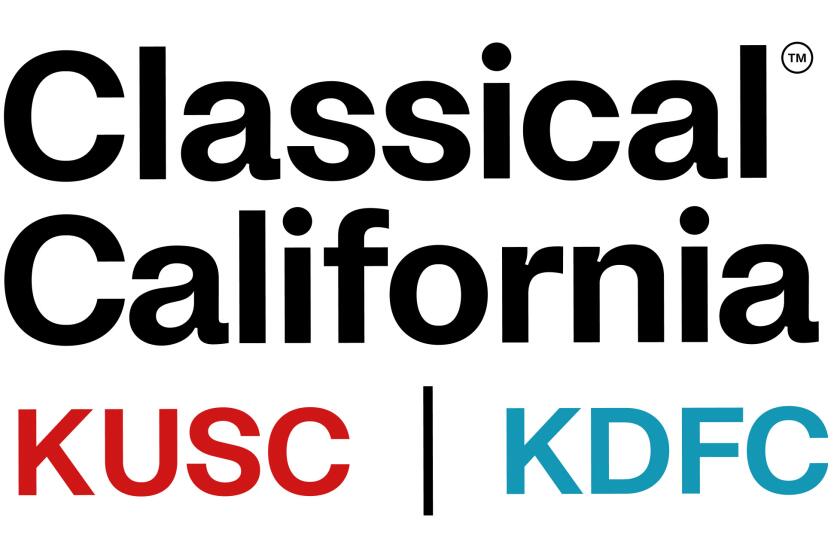Exec Says Latest Ratings May Be Skewed
- Share via
Don’t look for anyone to demand a recount of the Arbitron quarterly radio ratings when they are released today.
But there is a call for a pre-count.
Anticipating impact on the ratings from audience fascination with the extended election drama, which occupied about half of the three-month survey period, Roy Laughlin, general manager of pop music leader KIIS-FM (102.7), adult alternative outlet KYSR-FM (Star 98.7) and Latin-skewed oldies station KCMG-FM (92.3), is engaging in a little spin control. Laughlin, having seen what he considers dramatic signposts in the November monthly “trend” report released last month, sent a note to advertisers to remind them that the “Florida effect” is an anomaly, not a trend.
In particular, he cites major boosts in listeners for talk station KABC-AM (790) and news station KNX-AM (1070) among 18- to 34-year-olds, a demographic not normally targeted by news radio. He also notes the potential impact of increased television time, perhaps at the expense of radio. All those ears tuned to news radio and eyeballs glued to CNN and MSNBC had to come from somewhere--and it could well be from music stations.
“The November trend had KABC up 144% and KNX up 141% with 18-to-34,” he says, suggesting that the effect was felt most in the Los Angeles area, where people spend so much time listening to radio in their cars, and where the end of the news day in Florida hit right in precious afternoon drive time.
It’s no coincidence that the 18-to-34 group is the prime audience for KIIS, as well as KYSR, which both took dips in the November monthly report.
“There was a stall in the U.S. mind-set where people did nothing but focus on news issues,” Laughlin says. “It’s not an excuse. It’s real.”
And it’s hardly the first phenomenon of the sort. The 1999 Monica Lewinsky case and subsequent impeachment hearings; the 1995 O.J. Simpson trial; and the aftermath of the 1992 Los Angeles riots all drove listeners to news and talk radio for extended stays.
Still, some of Laughlin’s competitors say that putting too much stock in the “Florida effect” could be misleading. For one thing, notes KABC General Manager Erik Braverman, the monthly reports use a smaller sample and less strict methodology than the quarterlies and are less reliable.
Actually, Braverman is concerned about a reverse phenomenon that could cause backlashagainst news and talk stations.
“There’s always a danger when you have a boost in the ratings of any kind,” he says. “What goes up, must come down.”
And Val Maki, general manager of both hip-hop KPWR-FM (105.9) and country KZLA-FM (93.9), and Nancy Leichter, general manager of R&B; outlet KKBT-FM (100.3), say there are just too many factors involved to attribute too much cause and effect of their stations’ fortunes to such news events.
“Most news events that take over our lives help the news stations,” says Leichter. “But I don’t think any music stations suffered because of this. I don’t think it’s going to change Arbitron as much as some people think.”
Maki says that her analysis of the trend reports shows little negative impact on music stations.
“Looking at stations in the [adult] demographic that you would think would get hit by this, none of them are really down,” she says, pointing to strong November performances from KZLA and soft-pop KOST-FM (103.5).
In fact, while KIIS and KYSR had November drops, youth-skewed rocker KROQ-FM (106.7) had increased ratings for the month. Perhaps more of a drag on KIIS was KKBT’s debut of comedian-actor Steve Harvey in its morning slot. Harvey soared over most of the competition in the 18-to-34 demographic in the November trends, second only to KROQ’s Kevin & Bean, while apparently drawing listeners away from KIIS’ Rick Dees, who dropped to sixth in that age group.
But there will be no surprise if KIIS proves to have had a strong December, powered by ticket giveaways to its holiday Jingle Ball concert at the Shrine Auditorium.
Laughlin himself says that he’s not really worried about KIIS’ stature. It’s the top-rated English-language station in the region and can easily withstand any temporary audience diversion. But stations that may be a listener’s second favorite--a category he puts KCMG in for many people--can suffer.
In any case, the executives agree that most of the advertising community is sophisticated enough to take the aberration into consideration and average out these kind of events-related spikes and dips.
Laughlin, though, says that even in the bigger-picture mode, something this huge on the cultural radar can leave a lasting impression to the detriment of FM radio and the benefit of AM outlets.
“The real injustice is if you project nine months into the future and the [advertising] buyers are using four-quarter averages, while the news stations have returned to their normal state,” he says. “It took us a whole year to purge out the O.J. effect.”
More to Read
The biggest entertainment stories
Get our big stories about Hollywood, film, television, music, arts, culture and more right in your inbox as soon as they publish.
You may occasionally receive promotional content from the Los Angeles Times.










